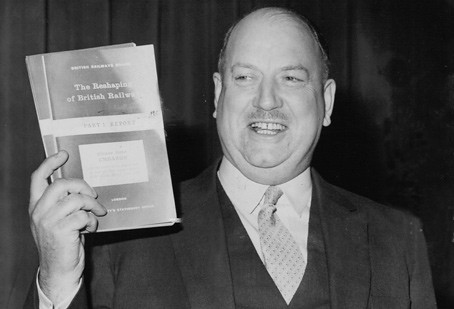
Introduction: The Spirit of Scotland
When you think of Scotland, images of rolling hills, bagpipes, and of course, whisky likely spring to mind. While whisky has long been the revered spirit of the Scottish highlands, there’s a new player on the block that’s shaking up the drink scene: craft gin. Over the past few years, Scotland has seen an explosion of small distilleries producing unique, botanically rich gins that are capturing the hearts (and palates) of gin lovers everywhere. With this craft gin revolution taking over British bars, it’s time to explore the vibrant world of Scotland’s gin scene.
The Rise of Craft Gin in Scotland
Historically, gin was often overlooked in favor of whisky in Scotland. However, the craft liquor movement has encouraged distillers to experiment with flavors and techniques, leading to a resurgence of gin production. The rise of craft gin can be attributed to a few key factors:
- Consumer Demand: There has been a noticeable shift in consumer preferences, with many people seeking out premium, artisanal products. This new wave of drinkers is eager to explore spirits beyond the traditional offerings and is drawn to the unique flavor profiles that craft gin provides.
-
Innovation: Scottish distillers are known for their creativity, and this is evident in their gin production. By utilizing local ingredients, experimenting with various botanicals, and employing innovative distillation techniques, they create gins that showcase the distinct flavors of Scotland.
-
Sustainability: Many craft distilleries are committed to sustainability. From sourcing local botanicals to using eco-friendly practices, these distilleries appeal to environmentally conscious consumers.
The Anatomy of Craft Gin
What makes craft gin so intriguing? At its core, gin is a spirit that is flavored with botanicals, with juniper being the most prominent. However, the diversity of flavors and ingredients used in gin production is what sets craft gins apart. Here are some common botanicals and how they reflect the Scottish landscape:
- Juniper Berries: These are the backbone of any gin. They provide the characteristic piney flavor and aroma.
-
Botanicals: Distillers in Scotland are increasingly using local botanicals, such as heather, seaweed, and even Scottish berries, to create unique flavor profiles. For instance, gins that incorporate Scottish raspberries or elderflowers offer a taste of the Scottish countryside.
-
Regional Variations: Just like whisky, the region where a gin is produced can influence its flavor. For example, gins from the Highlands might incorporate more earthy botanicals, while those from the Lowlands might lean towards floral notes.
Featured Scottish Craft Distilleries
Several distilleries have emerged as front-runners in this craft gin revolution. Here are a few that are making waves:
The Edinburgh Gin Company
Established in 2010, the Edinburgh Gin Company has quickly gained popularity with its range of gins inspired by the city. Their Classic Gin is infused with a blend of botanicals, including Scottish heather and citrus peels, resulting in a refreshing and balanced flavor. The company’s Rhubarb and Ginger Gin has become a fan favorite, showcasing the versatility of this spirit.
Caorunn Gin
Located near the picturesque village of Ballindalloch, Caorunn Gin is crafted in small batches using traditional methods. The name “Caorunn” is derived from the Gaelic word for rowan berry, which is one of the ten botanicals used in the distillation process. This gin is known for its crisp taste and floral aroma, making it a versatile choice for cocktails.
Isle of Harris Distillers
The Isle of Harris Distillers is dedicated to producing gin that embodies the spirit of Harris. Their signature gin is infused with sugar kelp harvested from the local waters, giving it a distinctive maritime flavor. The distillery also prides itself on its commitment to sustainability, making it a beloved choice among eco-conscious drinkers.
Pickering’s Gin
Originating from Summerhall, the UK’s oldest surviving purpose-built theatre, Pickering’s Gin is crafted using a secret recipe that dates back to the 1940s. With a nod to both traditional and modern gin-making methods, Pickering’s offers a classic yet contemporary gin experience, featuring botanicals like cardamom, cinnamon, and star anise.
How to Enjoy Craft Gin
Now that we’ve got a taste of the exciting distilleries leading the charge, let’s dive into the various ways to enjoy craft gin. Here are some popular serving suggestions:
Classic Gin and Tonic
You can’t go wrong with the classic gin and tonic. Choose a high-quality tonic that complements the flavors of your chosen gin—think Fever-Tree or Fentimans. Garnish with botanicals that echo those found in the gin. For example, if you’re using a gin with floral notes, add a sprig of rosemary or a slice of cucumber.
Craft Gin Cocktails
Craft gins can elevate classic cocktails, making them even more exciting. Try a gin martini with a twist of lemon or a negroni with a Scottish flair by using a local vermouth. The possibilities are endless!
Gin and Food Pairing
Much like wine, gin can be paired with food. Think about the botanicals in your gin and how they might complement different dishes. A herbaceous gin might pair beautifully with grilled fish or salads, while a spicier gin could enhance the flavors of barbecued meats.
The Impact on British Bars
The craft gin revolution has not only transformed the distilleries themselves but also the landscape of British bars. As gin has surged in popularity, many bars have revamped their drink menus to include an impressive selection of craft gins. Here’s how this shift is manifesting:
- Dedicated Gin Menus: Bars are now offering extensive gin menus that highlight local craft options alongside international brands. These menus often include tasting notes and suggested pairings, inviting customers to explore the diverse flavors available.
-
Signature Cocktails: Many bars are creating their own signature cocktails featuring craft gin, encouraging patrons to try something new and exciting.
-
Gin Events: Some bars host gin tastings or events where gin enthusiasts can learn about the different distilleries, botanicals, and cocktails. This has fostered a sense of community among gin lovers and has allowed for deeper engagement with the craft gin movement.
Conclusion: A Bright Future for Scottish Craft Gin
As the craft gin revolution continues to gain momentum, Scotland is firmly establishing itself as a leader in the world of artisan spirits. With an impressive array of innovative distilleries, unique botanicals, and a burgeoning culture of gin appreciation, the future looks bright for this exciting spirit. Whether you’re a seasoned gin lover or just dipping your toes into the world of craft gin, Scotland’s offerings are sure to delight and inspire. So, next time you’re at a bar, don’t forget to explore the wonders of Scottish craft gin—who knows, you might just find your new favorite spirit!

